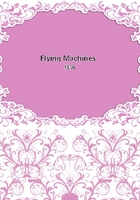
第32章
Changes, many of them extremely radical in their nature, are continually being made by prominent aviators, and particularly those who have won the greatest amount of success. Wonderful as the results have been few of the aviators are really satisfied. Their successes have merely spurred them on to new endeavors, the ultimate end being the development of an absolutely perfect aircraft.
Among the men who have been thus experimenting are the Wright Brothers, who last year (1909) brought out a craft totally different as regards proportions and weight from the one used the preceding year. One marked result was a gain of about 3 1/2 miles an hour in speed.
Dimensions of 1908 Machine.
The 1908 model aeroplane was 40 by 29 feet over all.
The carrying surfaces, that is, the two aerocurves, were 40 by 6 feet, having a parabolical curve of one in twelve.
With about 70 square feet of surface in the rudders, the total surface given was about 550 square feet. The engine, which is the invention of the Wright brothers, weighed, approximately, 200 pounds, and gave about 25horsepower at 1,400 revolutions per minute. The total weight of the aeroplane, exclusive of passenger, but inclusive of engine, was about 1,150 pounds. This result showed a lift of a fraction over 2 1/4 pounds to the square foot of carrying surface. The speed desired was 40miles an hour, but the machine was found to make only a scant 39 miles an hour. The upright struts were about 7/8-inch thick, the skids, 2 1/2 by 1 1/4 inches thick.
Dimensions of 1909 Machine.
The 1909 aeroplane was built primarily for greater speed, and relatively heavier; to be less at the mercy of the wind. This result was obtained as follows: The aerocurves, or carrying surfaces, were reduced in dimensions from 40 by 6 feet to 36 by 5 1/2 feet, the curve remaining the same, one in twelve. The upright struts were cut from seven-eighths inch to five-eighths inch, and the skids from two and one-half by one and one-quarter to two and one-quarter by one and three-eighths inches.
This result shows that there were some 81 square feet of carrying surface missing over that of last year's model. and some 25 pounds loss of weight. Relatively, though, the 1909 model aeroplane, while actually 25pounds lighter, is really some 150 pounds heavier in the air than the 1908 model, owing to the lesser square feet of carrying surface.
Some of the Results Obtained.
Reducing the carrying surfaces from 6 to 5 1/2 feet gave two results--first, less carrying capacity; and, second, less head-on resistance, owing to the fact that the extent of the parabolic curve in the carrying surfaces was shortened. The "head-on" resistance is the retardance the aeroplane meets in passing through the air, and is counted in square feet. In the 1908 model the curve being one in twelve and 6 feet deep, gave 6 inches of head-on resistance. The plane being 40 feet spread, gave 6 inches by 40 feet, or 20 square feet of head-on resistance. Increasing this figure by a like amount for each plane, and adding approximately 10 square feet for struts, skids and wiring, we have a total of approximately, 50 square feet of surface for "head-on" resistance.
In the 1909 aeroplane, shortening the curve 6 inches at the parabolic end of the curve took off 1 inch of head-on resistance. Shortening the spread of the planes took off between 3 and 4 square feet of head-on resistance.
Add to this the total of 7 square feet, less curve surface and about 1 square foot, less wire and woodwork resistance, and we have a grand total of, approximately, 12 square feet of less "head-on" resistance over the 1908 model.
Changes in Engine Action.
The engine used in 1909 was the same one used in 1908, though some minor changes were made as improvements; for instance, a make and break spark was used, and a nine-tooth, instead of a ten-tooth magneto gear-wheel was used. This increased the engine revolutions per minute from 1,200 to 1,400, and the propeller revolutions per minute from 350 to 371, giving a propeller thrust of, approximately, 170 foot pounds instead of 153, as was had last year.
More Speed and Same Capacity.
One unsatisfactory feature of the 1909 model over that of 1908, apparently, was the lack of inherent lateral stability. This was caused by the lesser surface and lesser extent of curvatures at the portions of the aeroplane which were warped. This defect did not show so plainly after Mr. Orville Wright had become fully proficient in the handling of the new machine, and with skillful management, the 1909 model aeroplane will be just as safe and secure as the other though it will take a little more practice to get that same degree of skill.